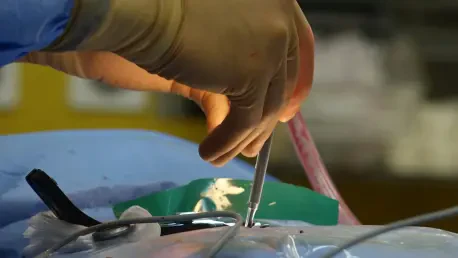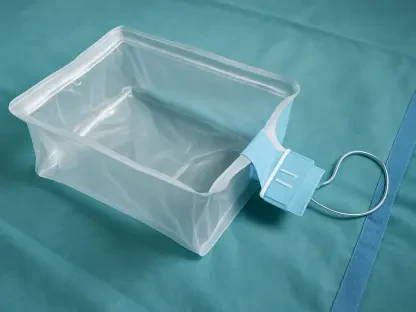India is witnessing a transformation in battlefield medicine, driven by advancements in hemostatic solutions that are enhancing the outcomes of trauma care. A centerpiece of this transformation is the domestically produced FIBROPLUG, a pioneering hemostatic sponge, offering an effective and affordable option to manage bleeding on the battlefield. Developed through a collaboration involving Fibroheal Woundcare and the Indian Institute of Science (IISc) Bengaluru, with substantial funding from the Biotechnology Industry Research Assistance Council (BIRAC), this product exemplifies local innovation tailored to meet the demands of military medical care. The launch of FIBROPLUG marks a substantial step toward self-reliance in defense medical supplies, highlighting its growing significance in the landscape of Indian battlefield medicine.
Overview of Battlefield Medicine in India
The current state of battlefield medicine in India reflects a dynamic interplay of innovation, technology adoption, and regulatory frameworks. Indian armed forces are increasingly reliant on efficient and cost-effective solutions to address trauma care needs during military operations. With its unique challenges and requirements, battlefield medicine encompasses a wide range of segments, from surgical interventions and wound care products to hemostatic solutions like FIBROPLUG.
Key players in the market include both domestic enterprises and global companies offering specialized products for rapid hemorrhage control. Technology plays a crucial role, with continuous advancements driving the development of solutions that can be deployed quickly and effectively in combat situations. India’s regulatory environment supports this growth through specific laws and standards aimed at ensuring the safety and efficacy of medical products designed for battlefield use.
Innovative Trends in Hemostatic Solutions
Emerging Technologies and Materials
Emerging technologies and materials are reshaping the landscape of hemostatic solutions in battlefield medicine. There is a clear shift toward biocompatible materials that offer rapid and reliable control of bleeding. FIBROPLUG, composed of silk, chitosan, and silica, exemplifies this trend, with its design providing a barrier that quickly stops bleeding and prevents further injury complications. As consumer awareness of the benefits of such solutions increases, there is an expanding market opportunity for products that address both civilian and military needs.
Innovations like FIBROPLUG are a testament to India’s commitment to creating homegrown solutions that match or exceed the standards of their imported counterparts. The strategic move toward locally developed technologies is driven by pressures to reduce dependence on foreign imports and enhance self-sufficiency in critical sectors. These evolving consumer behaviors and market drivers present new opportunities for growth and development in the industry.
Market Data and Projection Analysis
The market data surrounding hemostatic solutions is promising, with projections indicating sustained growth in this sector of battlefield medicine. Since its introduction, FIBROPLUG has seen a growing demand, underscoring the need for affordable and efficient solutions in high-pressure environments. Performance indicators reveal that products like FIBROPLUG are expected to see increased adoption across both military and civilian sectors, driven by their cost-effectiveness and ease of use.
Forecasts suggest that as more buyers, including healthcare providers and military outfits, become aware of the capabilities of innovative solutions like FIBROPLUG, their market share will continue to rise. This forward-looking perspective is backed by data that reflects the increasing acceptance of novel medical technologies and highlights the potential for expansive growth in the coming years.
Challenges in Battlefield Medicine Adoption
Several challenges impact the adoption of new solutions in battlefield medicine. Technological complexities can hinder the deployment of advanced solutions like FIBROPLUG, especially when it involves novel materials that require specific handling and training for optimal usage. Regulatory barriers can also present difficulties, with stringent approval processes that products must undergo before market entry.
Addressing these obstacles requires a multifaceted approach. Collaborative efforts between research institutions, the industry, and regulatory bodies can facilitate smoother transitions from development to deployment. Strategies to overcome these challenges include enhancing workforce training, streamlining regulatory approval processes, and fostering a supportive environment for innovation to thrive.
Regulatory Aspects of Hemostatic Products
The regulatory landscape for hemostatic products is integral to their successful adoption and deployment. Significant laws and standards define the parameters within which these products are tested and approved for use, ensuring both safety and efficacy. Changes in regulatory guidelines can have profound effects on industry practices, shaping how emerging products like FIBROPLUG reach the market.
Compliance is essential, with strict requirements governing the quality and safety of medical products designed for use in battlefield situations. Companies must implement robust security measures and adhere to established standards to remain competitive in this highly regulated industry. These regulatory frameworks are not static but evolving, demanding that industry players stay abreast of changes to maintain alignment with global best practices.
Future Directions in Battlefield Healthcare Innovation
The future of battlefield healthcare is poised to see further innovation driven by technological advancements and changing global dynamics. Emerging technologies, including advanced biomaterials and digital health applications, offer new avenues for enhancing the readiness and response capabilities of military medical services. Potential market disruptors lie in the development of portable diagnostics and telemedicine options that provide real-time data and remote support.
Consumer preferences are also shifting toward solutions that promise faster recovery and better outcomes. This evolution necessitates continuous innovation and adaptation in product development. As global economic conditions impact resource allocation, the healthcare sector must adapt by emphasizing cost-effectiveness and scalability in the solutions offered to meet future demands.
Conclusion and Strategic Recommendations
The introduction of FIBROPLUG represents a milestone in the evolution of battlefield medicine in India, demonstrating substantial progress in domestic innovation geared toward enhancing trauma care efficiency. The report emphasizes the importance of continued collaboration between academia, industry, and government bodies to address the challenges of developing and deploying new solutions.
Strategically, the industry should focus on bolstering local manufacturing capabilities, enhancing training for healthcare providers, and refining regulatory frameworks to support innovation. Emphasizing innovation and economic viability will help solidify India’s position as a leader in supplying advanced medical solutions. Future considerations should include investing in research and development to keep pace with evolving military and civilian healthcare needs.









